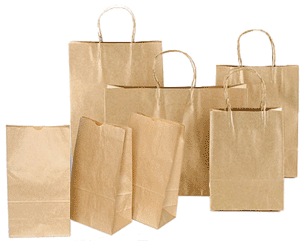 In the Philippines, plastic is out and paper is in, according to a report this week by S&T Media Service published in the Philippines-based Daily Mirror. The country's science agency is looking into more ways to make paper packaging, considered to be an environmental-friendly option to plastic, more accessible to all and even provide additional income opportunities to people, the article notes.
In the Philippines, plastic is out and paper is in, according to a report this week by S&T Media Service published in the Philippines-based Daily Mirror. The country's science agency is looking into more ways to make paper packaging, considered to be an environmental-friendly option to plastic, more accessible to all and even provide additional income opportunities to people, the article notes.
"The greater use of paper packaging is in line with our current initiatives that protect the environment and uplift the ecosystem," said Science Secretary Mario Montejo. "One of the thrusts of the Department of Science and Technology (DOST) is the support to green technologies, products and services."
In Metro Manila and nearby areas, the Daily Mirror article explains, more and more local governments are slowly easing out the use of plastic, compelling stores and vendors to use paper bags in wrapping their wares.
"People have become more aware of the environmental risks posed by the continued use of plastics after the onslaught of Typhoon Ondoy. Today, 27 towns already have in place local ordinances that regulate the use of plastic bags," Aimee Beatrix Habon, Science Research Specialist at DOST's Forest Products Research and Development Institute (FPRDI) Technology Innovation Division, stated in the article. "Increased demand for pulp and paper means more challenges for the industry and for DOST-FPRDI, as well," Habon added.
FPRDI has completed ongoing research studies on alternative raw materials—such as low-grade abaca fibers, banana fibers, and palm oils' empty fruit bunch fibers—for packaging paper, according to Adela Torres, chief of FPRDI's Pulp and Paper Products Development Section.
FPRDI is also working out a collaboration with the University of the Philippines Los Baños' Institute of Plant Breeding in studying hybrid abaca as reinforcement fiber. Currently, FPRDI is part of the Department of Trade and Industry-Bureau of Product Standards' Technical Committee on Board, Paper and Pulp, which develops standards for packaging paper.
FPRDI was likewise part of the initial stages when the "No-to-Plastic" campaign in Los Baños, Laguna, was conceptualized. Los Baños was one of the first towns in the country to regulate the use of plastic bags for packaging, the Daily Mirror article pointed out.
TAPPI
http://www.tappi.org/